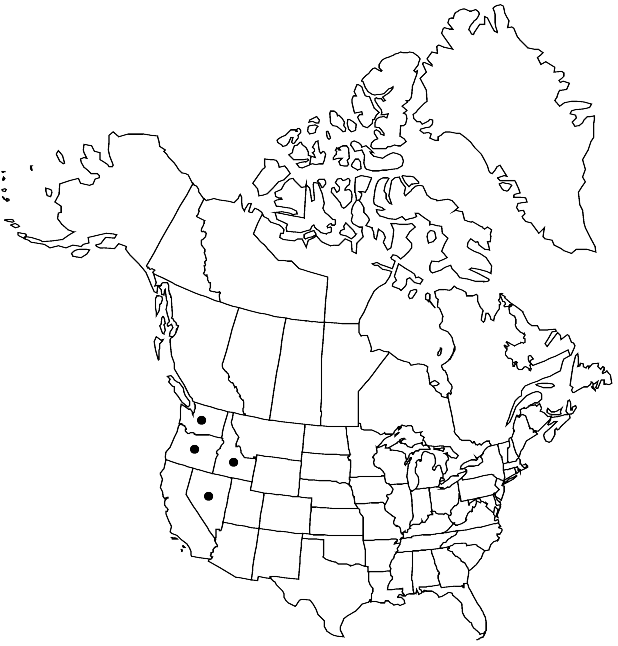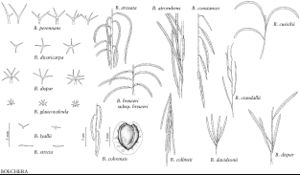Boechera cusickii
Novon 13: 384. 2003.
Perennials; long-lived; (often cespitose); sexual; caudex usually woody. Stems usually 1 per caudex branch, arising from center of rosette near ground surface, 1–2.5(–3.8) dm, densely pubescent proximally, trichomes simple, 0.5–1.5 mm, sparsely pubescent or glabrous distally. Basal leaves: blade linear to narrowly oblanceolate, 0.5–2 mm wide, margins entire, ciliate, trichomes (simple), 1–1.7 mm, surfaces moderately pubescent, trichomes simple and long-stalked, 2-rayed, 0.5–1.7 mm. Cauline leaves: 10–30, often concealing stem proximally; blade auricles 0–0.5 mm, surfaces of distalmost leaves sparsely pubescent. Racemes 5–14-flowered, usually unbranched. Fruiting pedicels ascending, straight, 4–15(–20) mm, glabrous or sparsely pubescent, trichomes simple. Flowers ascending at anthesis; sepals pubescent; petals white to lavender, 6–10 × 2–3 mm, glabrous; pollen ellipsoid. Fruits ascending to divaricate-ascending, not appressed to rachis, not secund, straight or curved, edges parallel, 4–8(–9.5) cm × 2.3–3 mm; valves glabrous; ovules 56–106 per ovary; style 0.1–0.5 mm. Seeds uniseriate, 1.5–2.5 × 1.5–2 mm; wing continuous, 0.1–0.2 mm wide distally.
Phenology: Flowering Apr-mid May.
Habitat: Basaltic bluffs, rocky slopes, rock crevices, gravelly hillsides, sagebrush hills, outcrops of volcanic rock
Elevation: 600-1800 m
Distribution

Idaho, Nev., Oreg., Wash.
Discussion
Peripheral populations of Boechera cusickii in south-central Idaho and northern Nevada have a higher proportion of branched hairs, possibly resulting from hybridization with B. sparsiflora.
Selected References
None.
